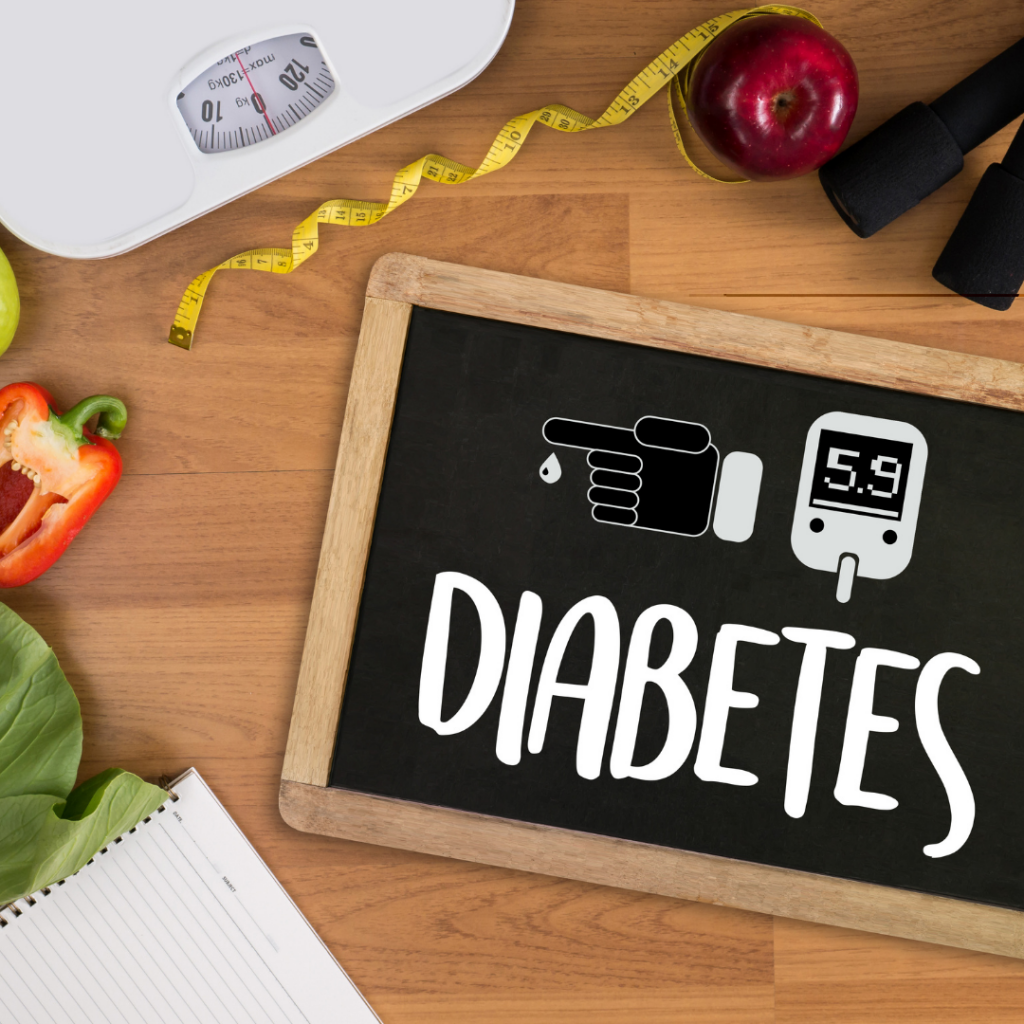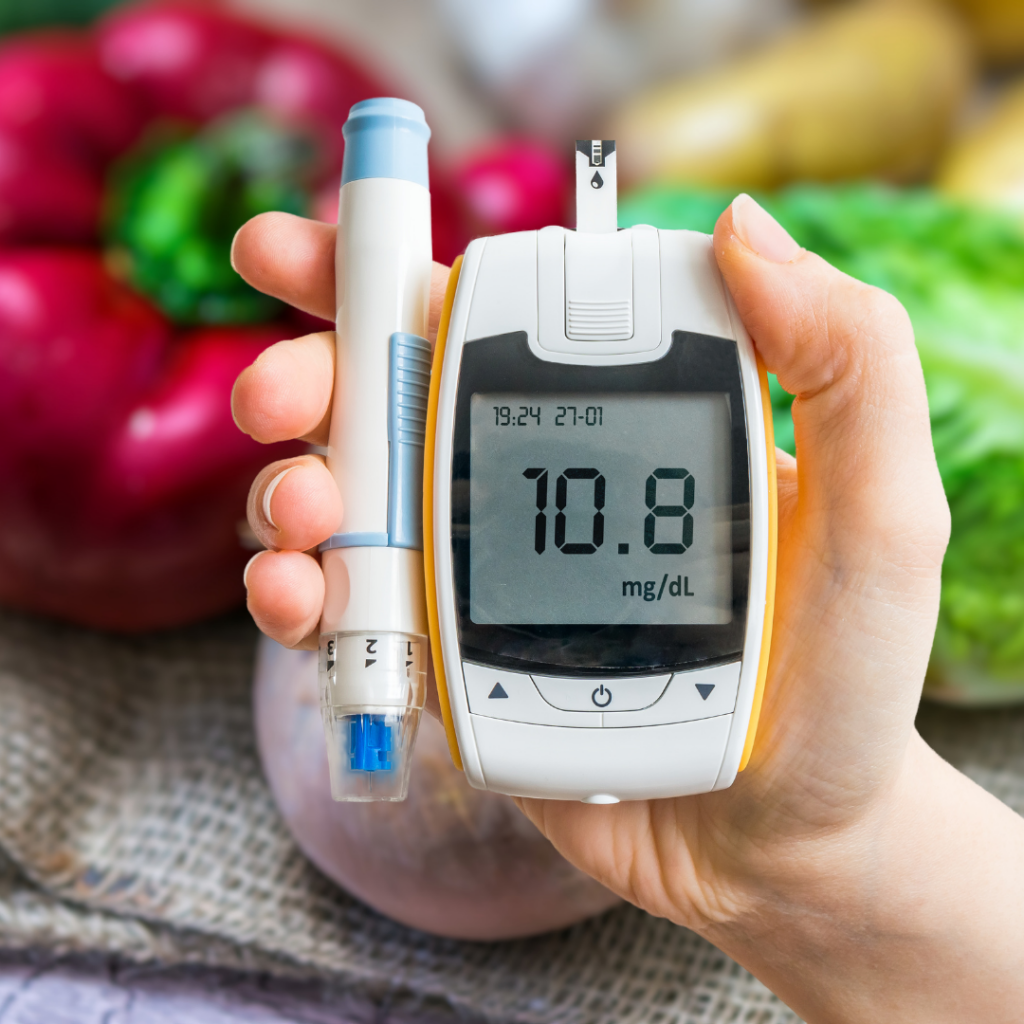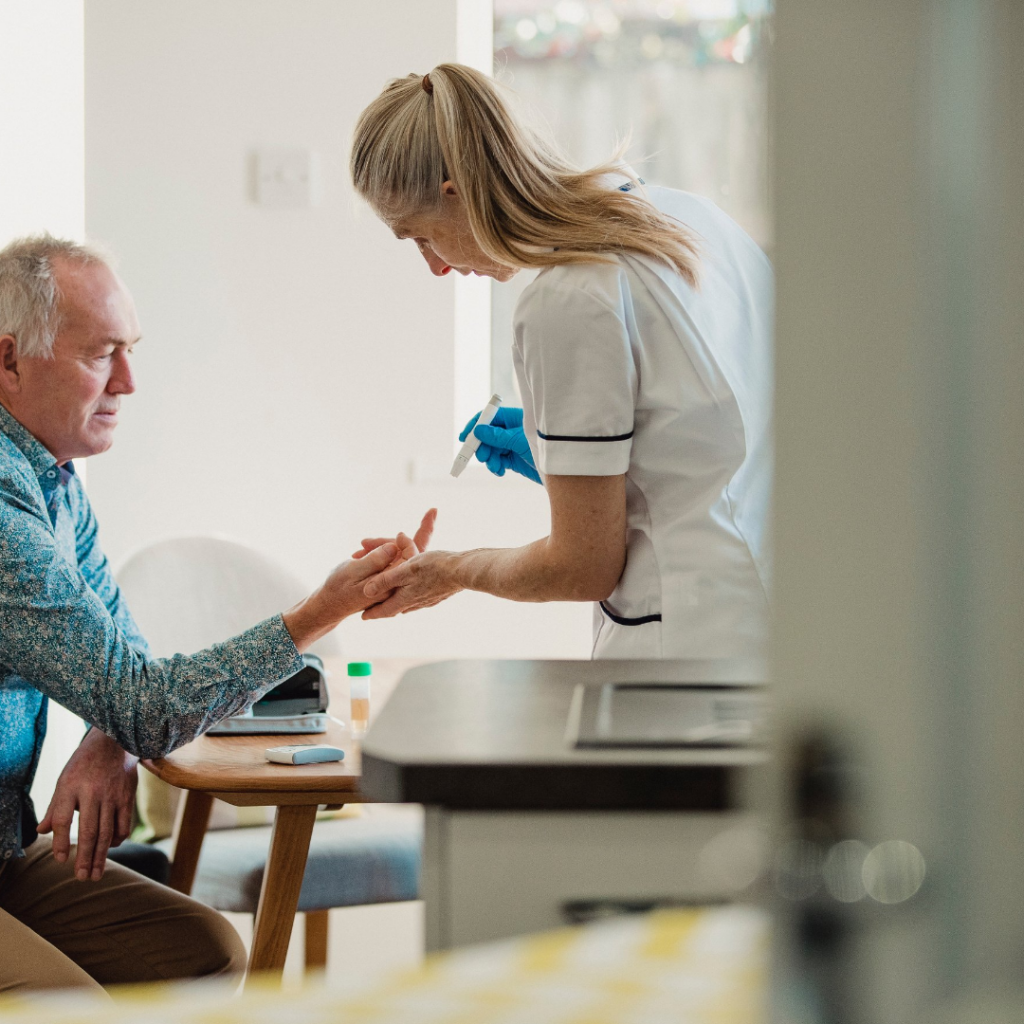It’s a known fact that diabetes critically affects your health. That is why early diagnosis, even at the pre-diabetes stage, is imperative.
However, it’s not just your body’s inner balance that gets affected by this metabolic disorder. Your physical appearance also gets altered especially as diabetes progresses.
For example, changes in your skin in terms of color, texture, and healing rate can be observed if you have diabetes.
According to a clinical analysis published in the American Journal of Clinical Dermatology, about 79.2% of patients diagnosed with Type 2 diabetes are bound to have skin disorders.
With that, it is vital to understand how diabetes changes your appearance to prevent it from aggravating.
And in honor of November as the American Diabetes Month, we’re here to provide you with the details you need to be aware of.

How Does Diabetes Change How You Look?
Diabetes can cause changes in your appearance, either mildly or extremely.
For starters, your skin will appear dry with off-color patches and texture.
Next, there’s the likelihood of alopecia or hair loss. Likewise, there is also a higher probability of changes in your body type.
But perhaps the worst physical impact of diabetes is foot ulceration that leads to gangrene, where a part of your entire foot’s skin becomes greenish-black in color.
For more information about these effects, check out the following.
1. Skin Aging and Damage
People diagnosed with diabetes eventually observe changes in their skin and not in a good way. It could range from itchiness, dryness to apparent discoloration.
a. Skin Wrinkling and Loss of Elasticity
Skin aging has been associated with diabetes not simply because the adverse effects are visible but because studies have supported the connection.
Those diagnosed with the disorder are prone to wrinkling, resulting from loss of elasticity or deterioration of the collagen in the skin. Hence, it is not uncommon to see diabetic patients with aged-appearing skin characterized by wrinkling and sagging.
According to research, skin aging due to diabetes can be linked to the accumulation of advanced glycation end products (AGEs). These compounds are formed once sugar is combined with fats and proteins in the bloodstream.
Since increased blood glucose or sugar is the main culprit for diabetes, it also plays a critical role in the formation of AGEs.
b. Dry and Itchy Skin
Due to the gradual loss of elasticity, it is expected that those with diabetes have dry skin.
Aside from the deteriorating collagen factor, skin dryness because of diabetes is also influenced by rapid dehydration.
With high levels of sugar in your blood, frequent urination becomes the norm. As a result, you lose more fluids than average, which contributes to your skin health.
If you’ve been reading more about diabetes, you may have already encountered the condition called diabetic itching. The name pretty much says it all.
Diabetic patients tend to experience localized itching. This is due to the restricted blood flow brought about by too much blood sugar.
Moreover, it could also be due to skin infections and inflammation, which are also common with diabetes.
c. Discoloration and Thickening Skin
Dark skin discoloration is an early sign of prediabetes or diabetes. This condition, which is clinically referred to as acanthosis nigricans, is characterized by darkened areas in the skin that often folds. The texture is velvety, and the affected skin thickens over time.
You can observe acanthosis nigricans at the back of your neck as well as your armpits and groin.
Although this condition is linked to diabetes, some people automatically assume that the skin discoloration they have is a product of sun exposure or other external factors.
However, they would realize that it is a symptom of diabetes once they try to scrub or treat it with skin solutions; however, nothing changes.
On the other hand, hard, thickened skin can develop in different parts of the body. When this calloused skin is found between fingers, toes, or both, it is referred to as digital sclerosis. If this condition persists, it would be too difficult to move your fingers and toes because of the stiffness.
d. Bumps, Spots, and Blisters
Several skin conditions may develop due to diabetes prompting the formation of bumps, spots, and blisters. One example is diabetic dermopathy. This condition leads to brown spots or lines forming a sort of dent or depression on the skin.
Another one is called eruptive xanthomatosis, which is characterized by pimple-like bumps that eventually turn yellow. You can observe these bumps on the elbow crooks, buttocks, and thighs.
Large blisters can sometimes develop due to diabetes. And when they form on the skin, you can often see them as a group or single blister on the legs and forearms. While they are surely noticeable, these diabetic blisters are usually painless.
2. Tooth Decay
It’s safe to say that nobody wants cavities, let alone missing teeth due to diabetes. However, if regulation and monitoring are not applied, this could be a possible scenario.
Dental health is another aspect of your wellness negatively affected by high blood sugar. Bacteria and other microbes feed on organic substances, especially sugar. Hence, having lots of sugar in your blood and saliva encourages microbial growth in the teeth and gums, leading to decay and oral infections.
As bacteria continue to feed and thrive on your teeth’ enamel and dentin, plaques build-up, which weakens the integrity of your teeth.
The plaque will eventually harden and turn into tartars if proper dental care is not practiced. And if these tartars occupy the gumline, it could lead to a condition known as gingivitis. If you have gingivitis, you will experience bleeding and swollen gums frequently.
Other oral health conditions common among diabetes are thrush, dry mouth, and periodontitis.
3. Hair Loss
Diabetes affects all aspects of your health, directly and indirectly. Hence, you may wonder if it also affects your hair.
Unfortunately, diabetes can impact your normal hair growth cycle that can lead to hair loss – and we’re not simply referring to the hair on your head. It includes the hair all over your body.
The hair growth cycle consists of three stages: the growing phase, regressing phase, and resting phase.
Naturally, during the growing phase, your hair grows thanks to the nourishment of the follicles through the blood supply. In the regressing phase, the hair follicles start to withdraw from the blood supply. And by the resting phase, the lack of nourishment will lead to hair fall.
With that, the cycle repeats as hair starts to regrow.
In the case of a diabetic patient, the blood supply is slowed down due to restrictions in blood circulation. As a result, it takes a longer time for hair to grow back.
Furthermore, if you have diabetes, you also have a higher risk of developing alopecia areata. Patches of hair loss characterize this condition as a result of an immune reaction against the hair follicles.
4. Feet Changes
You may have already heard about diabetic feet. If not, this could be valuable information that might influence you to get tested for diabetes.
Simply put, those diagnosed with diabetes can experience unpleasant conditions targeting their feet.
For starters, you have diabetic neuropathy. This condition causes a tingling sensation in your feet due to nerve damage. Eventually, you will feel numb to pain, making wounds and blisters unnoticeable as your body fails to recognize the aches.
Diabetic neuropathy is one of the reasons why it is common for diabetic persons to develop non-healing wounds around their feet.
The nerve damage, along with the limited blood flow in the legs and feet, also known as peripheral vascular disease, restricts the circulations of nutrients and blood cells.
As a result, sores and infections take time to heal, which eventually leads to tissue death or gangrene.
One of the worst possible scenarios with this condition is having your entire leg or feet cut off.
Most of the time, when wounds seize to heal and become gangrened, amputation is your last resort. Likewise, this is also necessary as diabetic neuropathy can lead to paralysis and fatal conditions.
Simply put, if you’re in this stage of diabetes, you will have to choose between your leg or your life. With this one, the right choice is quite apparent – although it’s undeniably painful.
5. Body Type Alteration
The link between type 2 diabetes and obesity has long been established, considering high fatty acids in the body can lead to insulin resistance. Thus, it is not uncommon for those diagnosed with obesity to also have diabetes mellitus.
Moreover, your body mass index (BMI) also increases as complications of diabetes begin to manifest. Nonetheless, the relationship between fats and diabetes is a bit tricky.
For example, people often assume that diabetic individuals are mostly on the larger side when it comes to body type.
However, some stay slender despite the diagnosis. This condition is known as lean diabetes, wherein you can develop the disease while maintaining a healthy weight. About 10% to 15% of diabetic people fall under this category.
Still, the risks of gaining weight and increasing your body fats are tied up with diabetes.
According to a study by Japanese researchers, abdominal fat is associated with people who developed insulin resistance.
In short, if you have rapidly increased visceral fats around your abdomen, it could be an indicator of issues with how your body processes sugar.
Can You Still Look Healthy and Have Diabetes?
Years of successful medical control concerning diabetes suggest that you can still retain a healthy appearance despite dealing with the disorder.
A critical factor for this effort is early diagnosis. The conditions mentioned above that can severely alter your looks will most likely develop if diabetes is not managed properly.
These actions can significantly help you protect your skin, scalp, feet, and teeth against the adverse effects of diabetes.
1. Monitor your blood sugar regularly: High blood sugar restricts blood flow, affecting nerve and follicle growth. So, it only makes sense to prevent your blood sugar from spiking too high.
2. Prevent dry skin: Moisturize your skin regularly. Keep it clean, especially around the groins, armpits, and toes, to prevent infections. Avoid hot baths or showers, along with other activities that can cause skin dryness.
3. See your doctor for any infection: Never let an infection last long on your skin if you have diabetes. That’s an important rule of thumb, especially if you can’t feel pain in specific areas.
4. Maintain good dental habits: Brushing your teeth, flossing, and visiting your dentist regularly are some of the things you can do to prevent diabetes-related infections.
5. Switch an appropriate diet: Your food choices pretty much dictate how diabetes can further impact your health. So give up foods that can worsen the metabolic disorder and switch to alternatives that can improve your health.

How to Get Tested for Diabetes?
There are several blood tests used to diagnose diabetes. Here are the common ones:
Hemoglobin A1c Blood Test: This test is used to measure your average blood sugar within 2 to 3 months. If your A1c is between 5.7 to 6.4%, then you have prediabetes. On the other hand, an indicator of diabetes is when your A1c is at 6.5% or higher.
Glucose Tolerance Test: With this test, your blood sugar levels are measured before and after drinking a liquid with glucose. Instead of waiting for months to get a picture of your glucose level, blood sugar is checked after 1 to 3 hours.
Glucose Plasma Blood Test: This test measures how much sugar you have in your bloodstream. It is performed whether you fast or not.
Comprehensive Diabetes Profile Blood Test: While there can be several blood tests required to diagnose diabetes, you can find all these necessary tests in one package. The comprehensive diabetes profile blood test is an all-in-one blood test panel designed primarily to screen diabetes mellitus.
When to Get Tested for Diabetes?
According to the American Diabetes Association, standard testing for diabetes should start at age 45. However, if you have higher risks for diabetes, testing may start earlier.
For example, if you are obese, screening for diabetes is part of your overall health workup.
Likewise, pregnant women are also tested for gestational diabetes between 24 and 28 weeks of pregnancy.
If you have a family history of diabetes and a lifestyle to match, watch out for the following symptoms:
- Dry skin
- Blurry vision
- Frequent urination
- Increased infections
- Constant thirst and hunger
- Sores and wounds that heal too slowly
- Tingling or numbing around the hands and feet

The Bottomline
All aspects of your health are affected by diabetes – whether it’s the inside or the outside. Nevertheless, it’s unwise to focus on one part and neglect the other.
If you’re diagnosed with diabetes, look closely into ways to prevent the severe impacts of the disorder.
On the other hand, if you haven’t gotten tested yet despite the risks and overwhelming symptoms, secure the complete test package already to avoid further complications.
